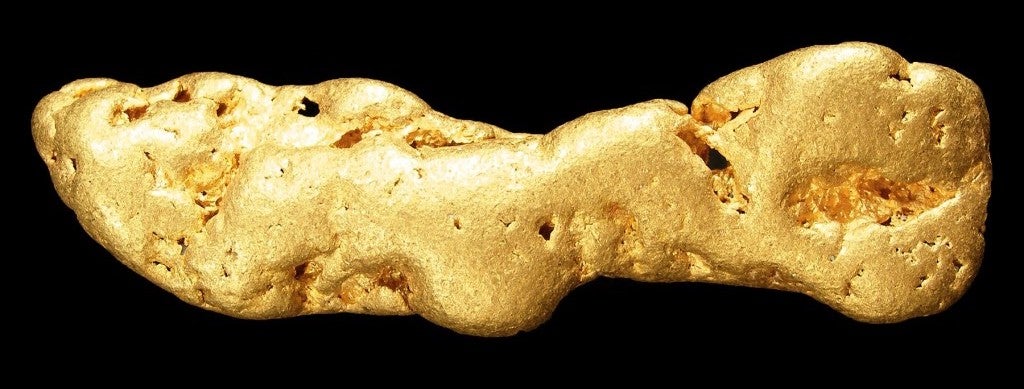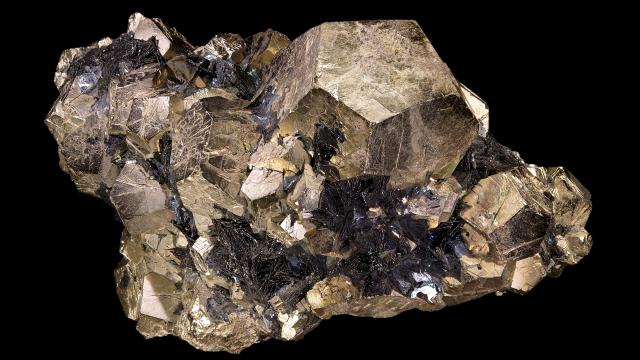Confirming once more that it cannot be trusted, the metal known as fool’s gold, aka pyrite, can contain bits of the real thing, according to an Australian-Chinese research team. Getting at the trapped gold, however, is likely to be more trouble than it’s worth.
To the trained eye, the differences between the two minerals are somewhat obvious. Pyrite is magnetic; gold is not. Pyrite can manifest in bizarrely perfect geometries, while soft gold looks more like lustrous pebbles, smoothed by harder outside forces. Plenty of folks entranced by pyrite’s sparkle have bought and sold the stuff around the world. Pyrite even turned up during the California gold rush, deluding the fortune-seekers sifting through the state’s waterways.
This research team examined pyrite and found gold inclusions — exceptionally small ones that could only be seen using an atom probe, an instrument that can visualise the cross-sections of objects on an atomic scale. In other words, they’re invisible. The scientists used the atom probe to detect a new sort of way that gold hides inside fool’s gold. Their research was published in Geology last week.
“Previously gold extractors have been able to find gold in pyrite either as nanoparticles or as a pyrite-gold alloy, but what we have discovered is that gold can also be hosted in nanoscale crystal defects, representing a new kind of ‘invisible’ gold,” said Denis Fougerouse, a geologist at Curtin University in Australia and lead author of the new paper, in a university press release.

The block of pyrite the team inspected was collected from Jiangnan, China and formed where the Yangtze and Cathaysia tectonic plates collided about one billion years ago. Deep in the ground, and at the mercy of geologic processes, the pyrite developed imperfections that warped its crystalline structure. These defects, called dislocations, are extraordinarily small and trap the gold within the less precious mineral, which is composed of iron and sulphur.
In a Conversation article accompanying the paper’s release, Fougerouse wrote that it was previously suspected that bits of gold in pyrite crystals came about at different times, and the two minerals glommed together later on. The pyrite specimen the team inspected suggested that the two minerals can crystallize simultaneously, in a single process. Fougerouse also noted that different methods could be used to release the gold particles from their pyrite prison, which could be more energy efficient than the typical means of gold extraction, reactor-based oxidation, or smaller-scale methods like separating the gold from slag by smelting the ore.
We’ve yet to dislodge all of pyrite’s secrets. Some of them, it seems, were tucked away on the atomic level. But here’s hoping we won’t be fooled again.
